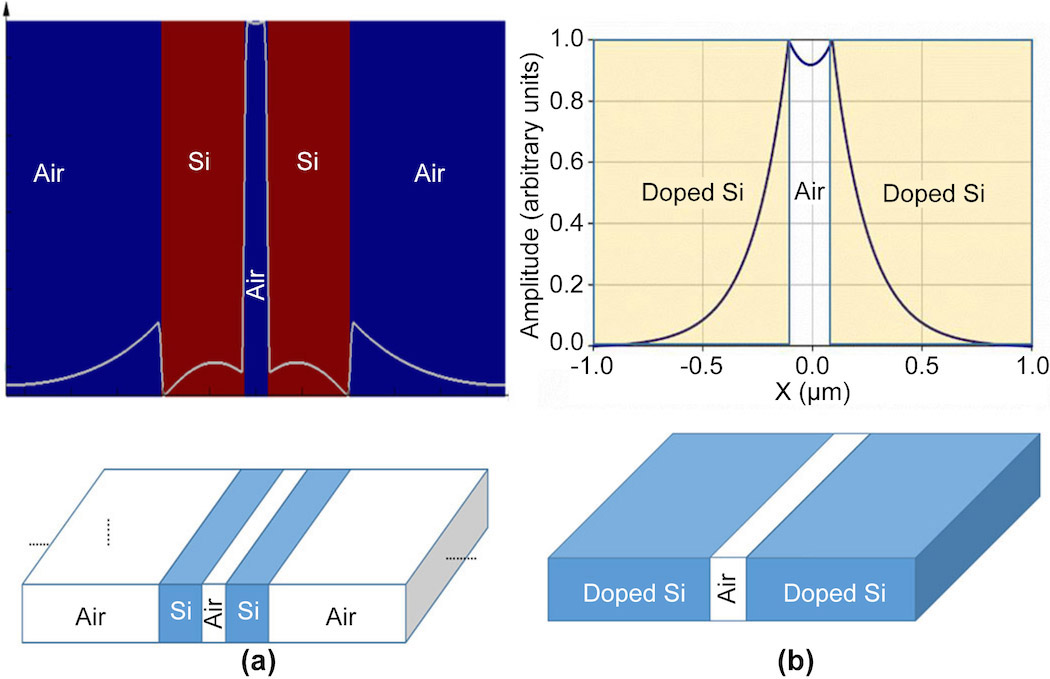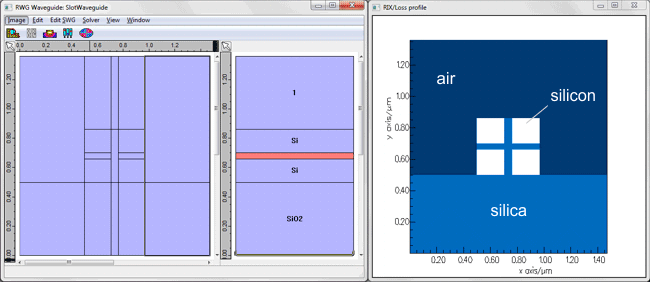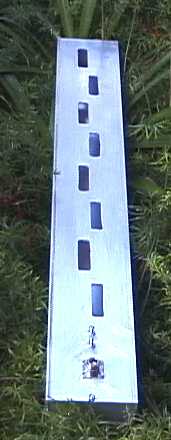Slot Waveguide

A slot-waveguide is an optical waveguide that guides strongly confined light in a subwavelength-scale low refractive index region by total internal reflection. A slot-waveguide consists of two strips or slabs of high-refractive-index (n H) materials separated by a subwavelength-scale low-refractive-index (n S) slot region and surrounded by low-refractive-index (n C) cladding materials. Slot radiators or slot antennas are antennas that are used in the frequency range from about 300 MHz to 25 GHz. They are often used in navigation radar usually as an array fed by a waveguide. But also older large phased array antennas used the principle because the slot radiators are a very inexpensive way for frequency scanning arrays. Slot antennas are an about λ/2 elongated. Silicon slot waveguide Bragg gratings have been designed, fabricated and the experimental data has been analyzed for its slow light properties. Slow light with a group index of 12.38 at a.
The model analyses the mode propagation within a nano slot waveguide. In a slot waveguide configuration, two high refractive index slabs (~3.48) are placed adjacent to the low refractive index slot (~1.44). Mode analysis was performed on a 2D cross section of a slot waveguide for an operating wavelength of 1.55[um]. Further analysis was carried out to optimize the width of the slot to deliver maximum optical power and optical intensity through the slot area.
This model example illustrates applications of this type that would nominally be built using the following products:


Slot Waveguide Antenna Design

however, additional products may be required to completely define and model it. Furthermore, this example may also be defined and modeled using components from the following product combinations:

Slot Waveguide Antenna
- COMSOL Multiphysics®and
Slotted Waveguide Antenna
The combination of COMSOL® products required to model your application depends on several factors and may include boundary conditions, material properties, physics interfaces, and part libraries. Particular functionality may be common to several products. To determine the right combination of products for your modeling needs, review the Specification Chart and make use of a free evaluation license. The COMSOL Sales and Support teams are available for answering any questions you may have regarding this.